Mn掺杂BaTiO3基薄膜储能性能研究毕业论文
2021-11-29 21:21:17
论文总字数:25380字
摘 要
随着有限的化石燃料的不断消耗,能量的存储问题也逐渐引起广大研究者的重视。在介质储能器件领域,铅基材料因为具有优异的性能而受到广泛应用,但是铅对环境与人体都有危害,需要寻找无铅储能替代材料。BaTiO3基薄膜材料被认为是铅基材料的良好替代选择之一。但纯BaTiO3薄膜因其储能性能较差,一般需要通过掺杂改性来提高其性能。
本文对Mn掺杂BaTiO3基薄膜进行了相关探究。选取具有代表性的Ba1-xSrxTiO3薄膜对其制备方法、表征测试技术、结构与性能进行了讨论。分析了Mn掺杂对BaTiO3基薄膜材料储能性能的影响,以及探究了不同退火温度对其显微结构的改变。结果表明,所有样品的物相结构均为简单的钙钛矿结构,没有其它第二相的存在。Mn因为具有磁性,可以使材料内部的电场重新分布组合。所以在薄膜中掺杂Mn可以明显提高所制备材料的储能性能,其储能密度与储能效率均随Mn掺量不断增大呈现一个先增大后减小的趋势。而Mn与其它改性元素(例如铈)共同掺杂对薄膜材料储能性能的提升效果更为明显。除了掺杂一些离子对材料进行改性,在薄膜储能材料制备过程中,控制退火的温度也同样可以提高薄膜的储能性能。
关键词:钛酸钡、锰掺杂、储能性能、薄膜
Abstract
With the constant consumption of limited fossil fuels, the problem of dielectric energy storage has gradually attracted the attention of researchers. In the field of dielectric energy storage devices, lead-based materials are widely used because of their excellent properties. However, lead is harmful to the environment and human body, and lead-free energy storage substitutes need to be found. BaTiO3-based thin film materials are considered as one of the good alternatives to lead-based materials. However, pure BaTiO3 films have poor energy storage performance and need to be modified by doping to improve their energy storage performance.
In this paper, Mn-doped BaTiO3-based thin films were investigated. The preparation method, characterization and testing technology, structure and properties of the representative Ba1-xSrxTiO3 film were discussed. The effect of Mn doping on the energy storage performance of BaTiO3-based thin film materials was analyzed, and the changes of microstructure under different annealing temperatures were investigated. The results show that the phase structure of all samples is simple perovskite structure and no other second phase exists. Mn can redistribute and combine the electric field inside the material because of its magnetism. Therefore, doping Mn in the thin film can obviously improve the energy storage performance of the prepared materials, and the energy storage density and energy storage efficiency show a trend of increasing first and then decreasing with the increasing Mn content. However, Mn and other modified elements (e.g. cerium) can enhance the energy storage performance of thin film materials more obviously. Besides doping some ions to modify the material, controlling the annealing temperature can also improve the energy storage performance of the thin film during the preparation of the thin film energy storage material.
Key Words:Barium titanate, manganese doping, energy storage performance, thin film
目 录
第一章 绪论 1
1.1 引言 1
1.2 储能BaTiO3基薄膜材料的研究现状 1
1.2.1 BaTiO3的晶体结构 1
1.2.2 储能BaTiO3基薄膜材料的改性探究 2
1.2.3 薄膜制备的一般方法 3
1.3 本论文的研究意义与内容 4
1.3.1 研究意义 4
1.3.2 研究内容 4
第二章 探究BaTiO3基薄膜的制备及结构与性能表征 6
2.1 BaTiO3基薄膜的制备 6
2.1.2 Sr掺杂BaTiO3(纯BST)薄膜制备 6
2.1.3 Mn、Sr掺杂BaTiO3(Mn掺杂BST)薄膜制备 6
2.1.4 Mn、Ce、Sr掺杂BaTiO3(Mn、Ce掺杂BST)薄膜制备 6
2.2 结构与电性能表征 7
2.3 表征储能性能的主要参数 7
2.3.1 充放电能量密度 7
2.3.2 储能效率 8
2.3.3 击穿电场强度 8
第三章 Mn掺杂BaTiO3基薄膜结构与储能性能分析 10
3.1 Mn掺杂BaTiO3基薄膜结构分析 10
3.1.1 Sr掺杂BaTiO3(纯BST)薄膜 10
3.1.2 Mn 、Sr掺杂BaTiO3(Mn掺杂BST)薄膜 13
3.1.3 Mn、Ce、Sr掺杂BaTiO3(Mn、Ce掺杂BST)薄膜 14
3.2 Mn掺杂BaTiO3基薄膜储能性能分析 15
3.2.1 Sr掺杂BaTiO3(纯BST)薄膜 15
3.2.2 Mn、Sr掺杂BaTiO3(Mn掺杂BST)薄膜 18
3.2.3 Mn、Ce、Sr掺杂BaTiO3(Mn、Ce掺杂BST)薄膜 19
3.3 本章小结 22
第四章 结论与展望 24
4.1 结论 24
4.2 展望 24
参考文献 25
附录 27
附录A 27
附A1 27
附A2 27
致谢 28
第一章 绪论
1.1 引言
随着社会的发展,能源问题始终是人们密切关注与研究的重要课题之一。除了新能源的研发与收集以外,能量的存储问题也是能源应用领域不容忽视的一个重要方面,吸引了众多研究者的目光。常见的储能器件有电池、燃料电池、超级电容器和电介质电容器等[1]。电介质电容器具有介电常数高、介电损耗低、功率密度高、充放电速度快、工作电压/电流大、可靠性好、温度稳定性好等优点。但在电介质电容器中,其具有的储能密度较低这一缺点限制了其应用范围,所以高储能密度的电介质电容器用材料在电子工业中具有巨大的发展前景。高储能密度的电介电电容器广泛应用于电动运输(混合动力汽车)、能量转换(光伏发电机和风力涡轮机)、医疗(X射线器件)等领域[2]。在所有的块体储能材料和薄膜储能材料中,钙钛矿结构被研究得最早和最透彻,其主要应用于电介质电容器用储能材料。其中以钛酸铅(PT)、锆钛酸铅(PZT)等为代表的一系列铅基材料具有优异的温度稳定性和铁电、压电、介电等性能,故广泛应用于各种电子应用领域[3]。但由于铅具有毒性,在生产与应用过程中,其不仅对环境而且对人体健康都会产生严重的影响,所以铅基材料在全球范围内的应用均都受到严格的限制。作为无铅材料,钛酸钡(BaTiO3)基薄膜材料被广泛认为是铅基材料的良好替代材料[4-7],其同样具有多种优异的铁电、压电、储能等性能,是电介质电容器、高密度电容、铁电存储器、压电微驱动器、换能器和其它器件应用的良好选择[8,9]。
1.2 储能BaTiO3基薄膜材料的研究现状
1.2.1 BaTiO3的晶体结构
BaTiO3的晶体结构随温度变化,具有多个温度相变点。1460℃左右以上,BaTiO3属于六方相;120-1460℃左右下,BaTiO3为立方相,其晶胞结构可以看成是简单立方晶胞[10],如图1-1所示。其中O2-位于面心,6个O2-构成一个氧八面体立方;Ti4 位于八面体的中心位置,即位于立方晶胞的体心;O2-与Ti4 共同构成[TiO6]结构,[TiO6]结构共顶点连接,而Ba2 则位于这些八面体之间,即位于立方晶胞的顶角。5-120℃之间,BaTiO3的晶体结构呈现四方相;-90-5℃之间,BaTiO3晶体维持正交相;-90℃以下,三方相是BaTiO3晶体的主要物相。
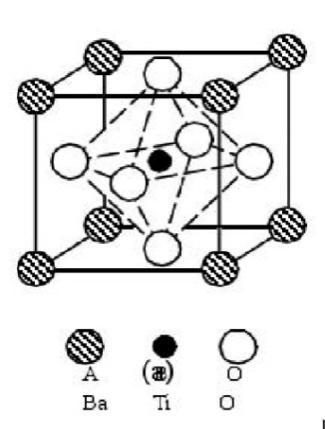
请支付后下载全文,论文总字数:25380字
相关图片展示:
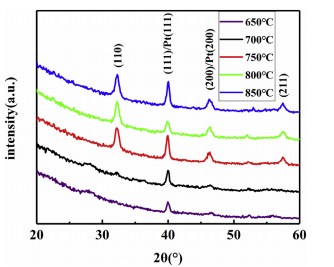
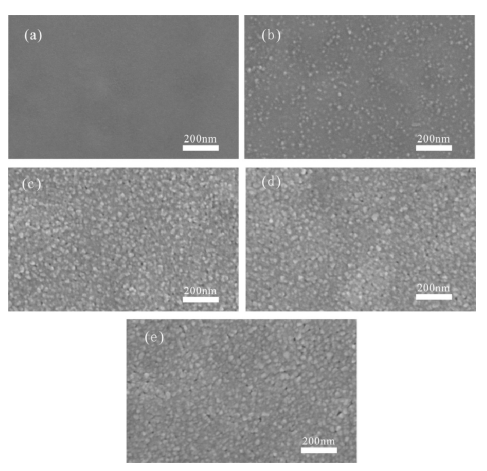
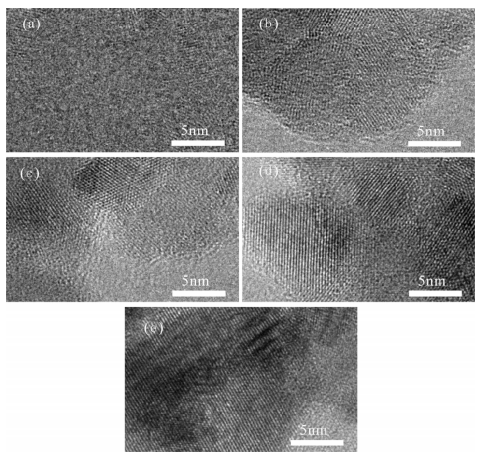
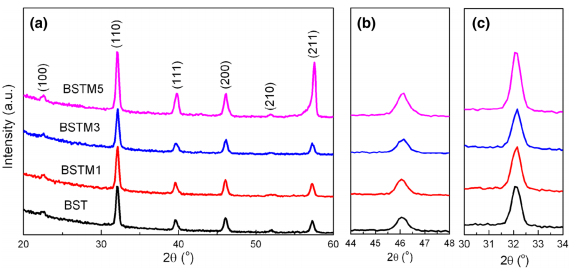
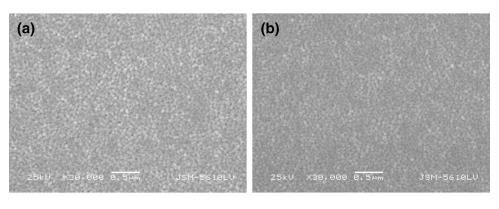
您可能感兴趣的文章
- 蒸养纤维掺杂高铁低钙水泥混凝土的抗海水冲磨性能研究文献综述
- TIPA对水泥-锂渣体系力学性能和水化性能的影响外文翻译资料
- TEA对锂渣-水泥复合粘结剂流变性能及水化性能的影响外文翻译资料
- 硫酸铝无碱液体促进剂的效果研究烷醇胺对硅酸盐水泥水化过程的影响外文翻译资料
- 新型C-A-S-H/PCE纳米复合材料:设计表征和对水泥水化的影响外文翻译资料
- 工业中碳捕获技术以及以水泥回转窑作为核心的吸附再生器外文翻译资料
- Ca/Al层状双氢氧化物的制备及其结构对水泥早期强度的影响外文翻译资料
- 蒸汽养护后混凝土养护方法对混凝土机械强度和透气性的影响外文翻译资料
- 含白云石或石灰石的偏高岭土水泥在相组成与抗压强度的异同外文翻译资料
- 与硅质铁尾矿结合的混凝土的耐久性外文翻译资料




